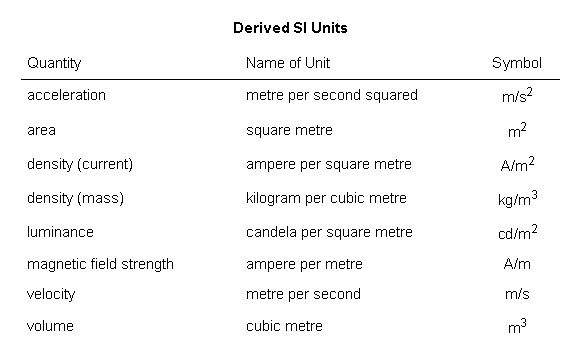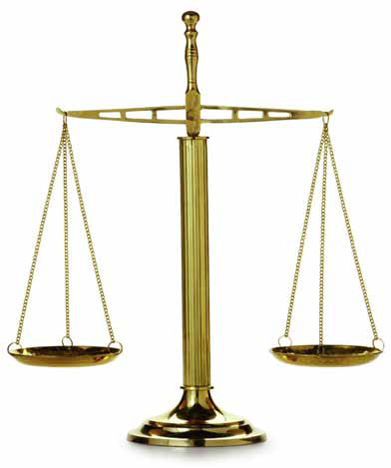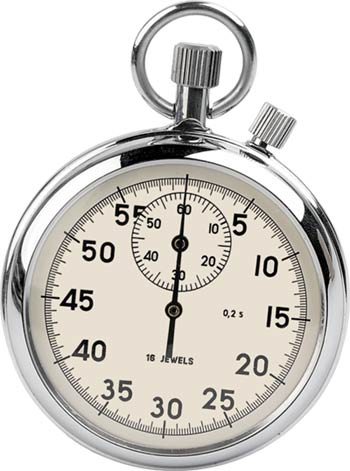Science is concern with
making sense out of the environment . The early stages of this “ search for sense”
usually involve objects in the environment things that can be seen or touched.
These could be objects you see every day, such as a glass of water, a moving
automobile, or a running dog. One way is to assume that all events in nature
have natural causes. We can then try to arrange a series of observation or
tests to learn what those causes are. Science is the word that we apply to this
process. The goal of science is to understand the world around us. There are,
however, many important fields of human endeavor that study the world around us
but are not considered sciences.
Scale is anything that can be
measured and expressed in value. If the terms of the direction and value,
magnitude grouped into two, namely:
- Scalar or fundamental quantity, the quantity that only has value without having direction. Example: mass, length, time, energy, effort, temperature, pace and distance.
- Vector or derived quantity, the amount of which has a value and a direction. Example: style, weight, strong currents, velocity, acceleration and displacement.
Meanwhile, based on the type of unit,
size grouped into two, namely:
a. Scale Basic
Principal amount is the amount that
the unit has been set in advance and are not composed of other quantities.
Principal amount of seven scale. Seven units are based on the principal amount
and the international system of units (SI) as indicated in the following table.
International system of units (SI) unit system means that the
most widely used around the world, with international best practice.
b. Scale Derivatives
Scale derivative is a combination of units of the principal amount.
Examples of broad scale derivative is a rectangular area. Area equal to the
length multiplied by width, where length and width are both units of length.
Note the magnitude derived tables, units and dimensions below.
Unit is a measure of a quantity used to measure. The types of
units namely:
a. Raw Unit
Standard unit is the unit that has
been recognized and its use internationally agreed with the so-called tau
international units (SI).
Example: meter, kilogram, and second.
International system of units is divided into two, namely:
1. MKS system (Meter Kilogram Sekon)
2. System CGS (Centimeter Gram Second)
b. Unit Not Raw
Non-standard unit is the unit that is
not recognized internationally and is only used in a certain area.
Example: fathoms, feet, legs, arms, tumbak, brick and steps
Science works best when scientists
every where read each other’s paper, check each other’s experiment and argue
about what those experiments mean. Because most experiment involve measurement
in which to present their findings. Scientists use the metric system of length,
volume, mass, and temperature when describing experiments and data. The metric
system is a decimal system based on the certain standards and scale on
multiples of 10. The metric system is also known as the International system of
Units or SI.
1. Length
The basic unit of length in the metric system is a meter
(m). One meter is roughly equivalent to 39,4 inchies, alittle longer than a
yard. To measure objects and distance much larger or smaller than a meter by
multiples of 10. A centimeter (cm) is 1/100 of a meter-about the width of the
nail on your pinky. As you may have guessed, the prefix centi- means on hundredth. A milimeter (mm) is 1/1000 of a meter.
The length-such as those used to describe living thing cells, pieces of cells,
and molecules. To measure the distance much greater than a meter, scientists
used a unit called the kilometer (km). One kilometer is contain 1000 meter and
use prefix kilo-
2. Volume
Volume is the amount of space an object occupies. The
basic metric unit of volume are the liter (L) for liquid and the cubic
centimeter (cc or m3) for solids. A liter contain slighty more liquid
than a quart. To measure small volume of liquids, scientists use fraction of a
liter called milliliters (mL). There are 1000 milliliters in a single liter. A
cubic centimeters is the volume of a solid that measures 1 cm by 1 cm by 1 cm.
Keep in mind that 1 milliliter is equal in volume to 1 cubic centimeter or 1
mL=1 cc.
3. Mass and Weight
Mass is measure of the amount of matter in an object.
Weight is a measure of the pull of gravity on that mass. In outer space, the
weight of an object may vary with it’s position, but its mass always remain the
same. On earth’s surface, however, an object’s mass and weight can usually be
considered constant and are often used interchangeably. The basic metric unit
scientists used to describe mass is the kilogram (kg). One kilogram is equal to
approximately 2,2 pounds. The mass of small objects is measured in grams (g).
One gram is 1/1000 of kilograms.
4. Temperature
The metric system measures
temperature using the Celcius scale (0C). On this scale water
freezes at 00C and boils at 1000C. Each celcius degree,
therefore, represents exactly 1/100 of the temperature range between the
freezing and boiling points of water. Normal human body temperature is about 370C
and comfortable room temperature is about 210C.
Measurement is something
that is used to
measure a quantity. A wide range
of measuring instruments have
a certain level of accuracy. It relies on the
smallest scale measures. The smaller the scale indicated
on the gauge, the higher precision
instruments. Some examples of measuring instruments in accordance with the magnitude,
namely:
a. Length
Measurement
1. Ruler
(ruler)
The bar is a long style with precision measuring up
to 0.1 cm or 1 mm. On the reading scale, the
position of the observer's eye should
be perpendicular to the scale ruler
in reading.
2. Calipers
Calipers used to
measure an object with a length of less than 1mm. Smallest scale
or level of
measurement accuracy up to
0.01 cm or
0.1 mm. Generally,
calipers are used to measure the length of an object, the diameter of the ball, Ebal coins,
and the inner diameter of the tube. Scale calipers
have two readings,
namely:
a). Main Scale
/ fixed, which is
contained in the fixed jaw vernier caliper.
b). Vernier scale, the scale contained in
the sliding jaw
Dapa shifted /
moved.
3. micrometer
Screws
A micrometer
screw gauge length
with the smallest degree of accuracy. It is 0.01 mm or 0.001
cm. Smallest scale (scale Nonius) on
micrometer screw located
on the sliding jaw, while the major scale
are the fixed
jaw. Micrometer screw
is used to measure
the diameter of a round object and a very
thin plate.
a.
Mass Measurement
Measuring instruments used to measure
the mass of an object is the
balance sheet. Based on how it works and the accuracy
balance sheet is divided into three, namely:
1. Digital balance, the balance that works with electronic systems. Accurate and up to 0,001 g
1. Digital balance, the balance that works with electronic systems. Accurate and up to 0,001 g
2. O'Hauss balance, ie the balance sheet with
a level of accuracy up to 0:01 g.
3. Equal arm balance, ie the balance
sheet with a level of accuracy
up to 1 mg or
0.001
c. Time
Measurement
International unit for time
is seconds or seconds. The second standard
is the time needed
by Cesium-133
atom to vibrate
9,192,631,770 times as much. The tools used to measure time, among other sundials, clocks, watches (with a precision of 1 second),
and a stopwatch (nearest
0.1 second).
























0 komentar:
Posting Komentar